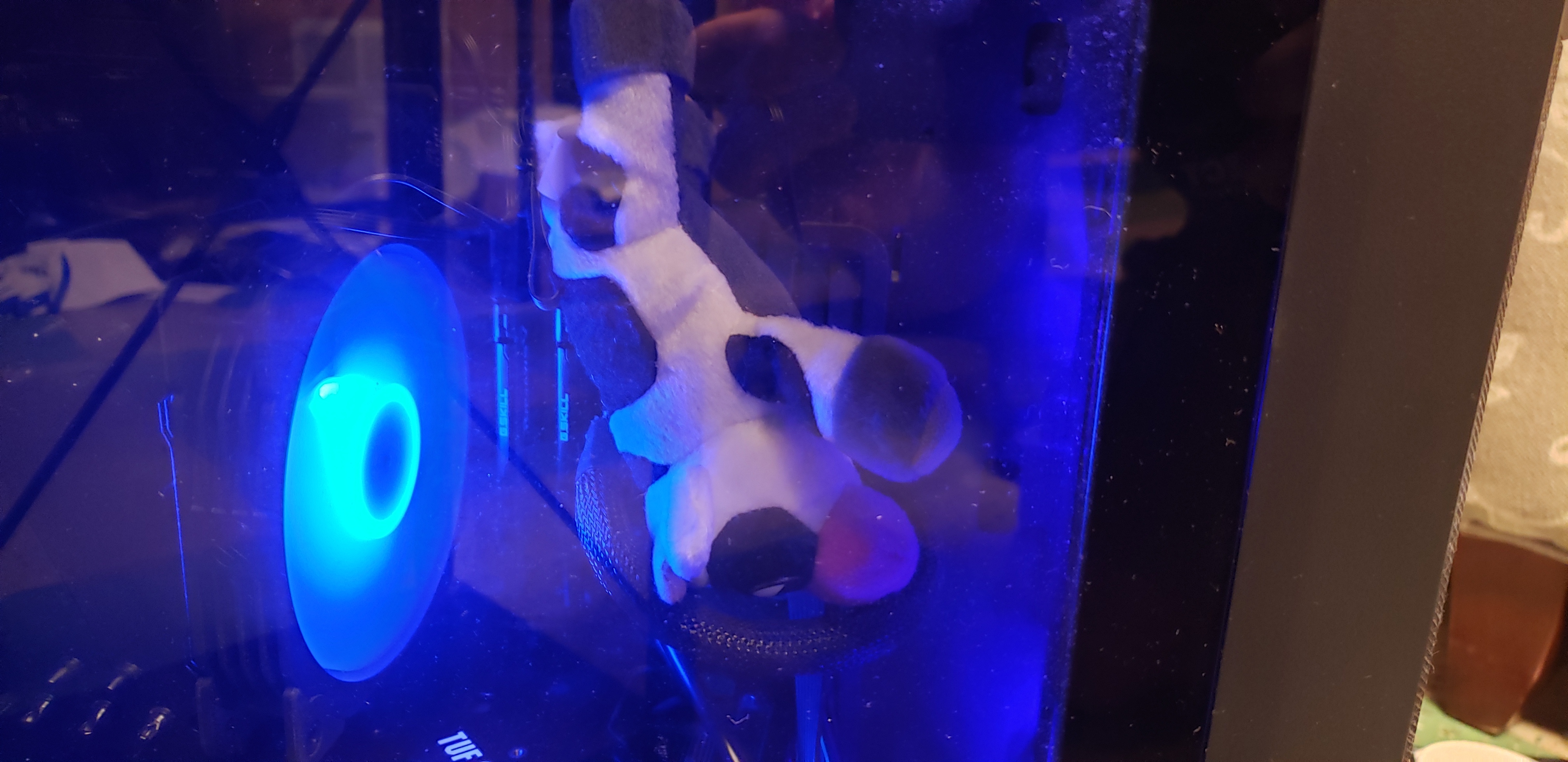
He looks shocked.
Mehby
Safety is no 1 priority!
We know this comment by Shannon Martin is correct and sensible because it was reviewed by Shannon Martin! As a licensed insurance agent, I’m sure she is qualified to talk about uh… electronics… hmm
worst ai prompt
This is the sort of person who thinks you need to ground yourself to be safe while working with electricity. Not 100% wrong, but just wrong enough to be very, very dangerous.
Some people know just enough to be dangerous.
For instance, an anecdote:
A nearby local hardware store put up a sign in 2017 and now this year, in front of the welding equipment, that says “WELDING GOGGLES DO NOT PROTECT EYES AGAINST THE SUN”
Now if they didn’t block uv from the sun, then they wouldn’t block uv from your welding arc.
BUT I 100% stand by their choice to put the sign up.
Because you need a certain shade or darker, and they sell a lot of different shades for different welding applications, including the safety tints people might want if they’re nearby and catch the occasional reflection.
And some people know enough to know welding arc = UV, sun = uv, and don’t stop to think about intensity.
In fact, in 2017, I knew someone who tried to use a #3 lense to look at the total eclipse, and as soon as the moon cleared moved enough for the sun to peek back, he deeply regretted not using a darker shade. Now has a weird spot in his vision that isn’t quite right.
Working with small ESD-sensitive electronics and using a proper grounding strap and mat with large resistors in series to provide protection from shock? Absolutely.
Wiring up a car battery or working with mains power? Absolutely not.
Car battery on its own won’t kill you, though wiring many in series might. There can also be some effects from DC sparks and welding on even 12V, which might cause other problems.
Looking passed the absolutely insane answer here, no one has even brought up the whole issue of AC vs DC. Batteries are DC, while your fridge that plugs into your wall running on AC. I know they make DC ones, but it isn’t like they are interchangeable.
Funny thing, most modern refrigerators use DC motors for their compressors so that they can run at variable speeds, so there’s likely an inverter that you could bypass if you know the appropriate voltage. The DC ones for RVs are the same internals, just without the inverter.
Correction: they still use AC motors, but those motors don’t use line AC. It goes line AC > rectifier > DC > inverter board > variable frequency AC to run the compressor motor.
Most RV fridges just use DC motors, but there are some that use VFDs and AC motors.
Have we moved to BLDCs yet?
Funny thing, most modern refrigerators use DC motors for their compressors so that they can run at variable speeds
No they don’t…they use AC motors and a VFD to control the speed.
I mean it’s probably labeled, right? How hard could it be?
Exactly. Find a hole that’s black and a hole that’s red, and stick some wires in there. How hard could it be?
(can’t answer, because she was fucking electrocuted)
Shannon Martin says just shake the battery and you’ll get DC.
Just swap the leads back and forth very fast
Just run the rectifier in reverse, duh
There are DC-AC converters you can use (might be called inverters in English idk), which are pretty interesting circuits. They are used all the time, e.g. to use solar energy
That part just takes an inverter.
I’m not sure of the max load output on a car battery, but with a 15 amp 1800 watt dc to ac inverter, you probably can run a fridge off one. It probably just won’t last all that long.
Hello, expert solarpunk here.
TLDR: Car battery is 350Wh. Fridge uses 143W idle, so it’ll run a fridge for 2-3 hours.
Explanation below:
Car batteries are lead-acid (sulphuric acid and lead plates).
They discharge according to Peukert’s Law as the negatively charged plate gets covered in lead via the acid (electrolyte).
As the battery depletes, the negative plate can begin to take permanent damage, and so you can’t discharge a lead-acid deeper than 10-20%, or about 10.8V, with the safe limit being ~50% discharge.
Most 12V, 60Ah batteries therefore only safely store and nominally discharge 350 Wh @ 350W.
You can discharge that as fast as you want but the faster you discharge, the lower the capacity is (with 1000-1500W bringing you way down to like 65 Wh). Fridges have a surge when they start up to fire up the compressor. Starter batteries can take that, but once the refrigerant is cold, the fridge just maintains the temperature which uses a lot less energy - about 143W on average.
Fridge uses 143W idle
Isn’t that like 1250 kWh on an annual basis of idle usage? An efficient fridge should use 150-200 kWh per year, this isn’t just idle usage. Even an inefficient fridge would be really high with that kind of idle usage.
Also assumes that the average fridge runs on 12V 😂
Watt hours are watt hours. Sure the compressor won’t run on 12 volts as is but the energy is there, just needs a converter.
Fwiw, our 15 year old fridge uses around 1000Wh per day.
That’s a big joule thief
Sure, buy an inverter and burn up 10% of your energy in the conversion if you’re lucky. That inverter will cost roughly as much as the contents of a standard fridge + freezer, by the way :)
At that point just buy a well insulated cooler and always have some ice on hand. It’ll last much longer.
The question wasn’t “Is it efficient or cheap”, it was how much energy is in a battery, and if and for how long would it run a fridge. If you also want to add one more point to why you probably shouldn’t do it, car starter batteries don’t generally like to be deeply discharged, you’d want to get a marine battery for that use.
As for how much the inverter would cost, depends on the fridge, but Amazon has a 1000W inverter for around $85, that should be enough for most. Ours could run from a 300W one, they cost around $30. Pretty handy devices if you want to run any kinds of electronics from a car anyway, I have one for when I want to charge my laptop and RC batteries on the field.
No it doesn’t. Watts do give a shit what percentage is voltage vs amps. You have to convert between AC and DC as appropriate as well as ensuring the voltage of a 12v battery is stepped if needed, but the watts are the same in any case. (Not figuring for system losses)
This argument is equivalent to saying you can run a fridge off of gravitational potential. Sure, energy is energy. That doesn’t make it remotely practical for the average person to use that form of stored energy, you absolute wet paper bag of an overly confrontational putz.
You should Google what a step up and step down transformer do. It’s very simple and easy to prove you’re a dipshit once you understand you’re arguing from bad faith trying to compare a simple bit of circuitry design to hydro power.
Go ahead and prove it then :) if it’s so very simple and easy
https://youtu.be/GtTcuexjeRw?si=e1p0nUHh1uXBp24R
3 seconds of googling like I said
Energy is energy, you are not an electrical engineer.
Congratulations, this is the worst attempt at ridicule I’ve ever seen
Your comment was ambiguous, stupid, and designed to ridicule. If you are attempting to imply inverter and other loss then be more specific. Regardless, the comment you were referring to already provides arbitrary values that you can assume include loss.
So please explain to me what the fridge being 12v DC or mains AC powered has to do with anything, when an example uses arbitrary power and energy values? I’m genuinely curious.
I don’t know… you didn’t mention your uncle once…
That’s because he is his uncle. You’re seeing the source material, be amazed
Does… Does he work at PlayStation?
It’s a secret. You’ll have to ask his uncle
Wow, those are some serious Licensed Insurance Agent skills
Fridge uses 143W idle
The only thing running in idle is the timer and power led, which consume insignificant amounts of power. By my calculations, the average modern fridge does bursts of ~300W during compression and defrosting cycles, with ~40-50W consumption on average over long periods.
Hey, ChatGPT, my uncle says new Macbooks are just glorified Raspberry Pis.
How many MB/s are in a Raspberry Pi?
About tree fiddy
It will take some mathversion to convert from the CPUs/s a Mac uses and the MotherBoards/s in a raspberry pi. I’m working on getting some insurance for ChaGPT to find out.
Uh, watt?
Volt
Jiggawatt
Whaddid u call me
uwattm8
OHMybad
Jigga deez nuts!
Thank you for clarifying.
Now I don’t know enough about electronics to know how wrong this is, but I do know enough about electronics to know that this absolutely sounds wrong.
The problem comes when someone takes an answer like this, knowing far less than I do, and they try and hook up their fridge to a car battery.
And this is why I hate LLMs. Being confidently wrong is scary enough when it’s just people, nevermind technology.
It does make me chuckle, though, that Skynet could have been totally innocent in their destruction of the human race, they just confidently came to the wrong conclusion and had the tools to carry it out.
Like a toddler whose inner thoughts are telling him to throw a cat out of the window. He doesn’t know he’s going to kill it, he just knows that’s what his brain is telling him to do.
Now I don’t know enough about electronics to know how wrong this is
Very, assuming the refrigerator in question typically runs on a typical power grid you’d find in the US or Europe (source: am electrical engineer)
Mainly because most compressors I’m aware of use alternating current (AC) motors, or at a minimum accept AC power. Batteries alone produce direct current (DC). The simplest way to make this work would involve an inverter (converts DC to AC). Cheap ones probably have at least a 10% conversion loss, so you’re looking at an hour or two at most.
Edit: should also mention that discharging a typical lead-acid battery until it’s all the way flat (realistically below ~11V) does irreparable damage. Might be cheaper to replace the contents of your fridge :)
From a technical stance, it’s right. This top comment does the math pretty well, and I’ve done it myself recently trying to decide if I should add a battery backup on my fridge. If you can overcome the startup surge (and a car battery definitely can), a modern fridge doesn’t draw very much power.
Of course, there’s a lot of details missing about how you do this without dying of electrocution. So I think it’s also a fair criticism of the LLM.
deleted by creator
deleted by creator
deleted by creator
Chat GTP answer
Sure, let’s say you have a typical car battery with a capacity of 60 amp-hours (Ah).
And let’s assume you have a small refrigerator that consumes about 100 watts of power when running.
To calculate how long the battery can power the refrigerator, we need to convert the power consumption from watts to amps.
Power (watts) = Voltage (volts) × Current (amps)
Assuming a car battery voltage of 12 volts:
100 watts / 12 volts = 8.33 amps
Now, we can determine the approximate runtime:
60 amp-hours / 8.33 amps ≈ 7.2 hours
So, with a fully charged 60 Ah car battery, you could run the refrigerator for approximately 7.2 hours before the battery is completely drained. However, it’s important to note that factors such as battery age, temperature, and other loads on the battery can affect actual performance.
I’d have expected ChatGPT to be able to call out power factor as well. Otherwise you’re getting volt-amps, not true wattage
Power factor isn’t a thing in DC and GPT appears to have assumed a DC powered fridge.
And losses in the inverter.
Given the lack of an inverter in GPT’s transcript there’s no AC to invert.
Please tell this to my dead car battery. It was killed by the tiny dome light last night, because I forgot to turn it off.
If your dome light isn’t an LED, then you should replace it with one. It won’t completely fix your problem but it will give you 9 to 10 times longer to catch it.
There’s really no reason that every car doesn’t have a voltage cut off to protect the battery such that it can still start. Additionally, if they just included a super capacitor then even with a heavily discharged battery, it could charge up the super capacitor to then start the car.
But if we went around doing smart stuff like that then we could potentially wreck the entire lead acid battery industry and that would just be awful…
3.5 or GPT-4? I can run the latter if need be.
if the car was running, the alternator would be charging the battery. would it be able to keep up with the drain of the fridge of just extend the time a bit?
Probably depends on the car + alternator, but it’s not so rare for modern gas cars to have AC outlets for backseat passengers, and the ones I’ve seen are typically rated 120-150W or so. Glancing at the power meter I have on my fridge, it uses ~110W while running and only runs ~10% of the time.
Theoretically the car probably can keep up while running, BUT
Compressor startup current may blow whatever fuse is protecting that circuit.
AND
Cars are very inefficient generators. You’d be wasting a bunch of fuel so I wouldn’t generally recommend it unless it’s an emergency.
That said, in an emergency it may be worth doing for like 20 min on / 1 hr off, so that you’re running the engine only when needed, but I’m not an expert, that’s just pure speculation.
Licensed Insurance Agent
Yup about the answer I expect.
I’ve been living off-grid fulltime for 6 years now and that answer is completely and thoroughly wrong. Not just wrong but completely missing the fact you’ll need at a minimum a 2000w inverter.
You’ll get 2 hours of usage AT BEST from a car battery, and if it’s lead acid, Gel or AGM chances are you will irreversibly damage (even if just slightly) the battery if you let it run until dead dead.
LifePo4 FTW!
A car battery shouldn’t be discharged at all. They are meant to supply a short burst of power and then be charged back up again.
A deep cycle lead acid battery can be used to run an inverter. They can be discharged to 50% capacity while still providing hundreds of cycles. If they are used for a backup and are not cycled frequently, they can be discharged to around 80%, but they will provide a lot less cycles.
A LiFePO4 battery is definitely the better choice for anything that needs to be cycled frequently though.
So if I turn the car battery upside down, a 12v DC battery should run a 120v AC appliance?? Brilliant! I have an idea for how we can use this with two fans to create infinite energy!
May be a better fit in !mildlyinfuriating@lemmy.world or similar
For the uneducated, what’s wrong with it?
One running on “Volts” and another running on “Watts” is like refusing to compare two cars because one car runs on Wheels and the other running on Motors
Well, you just have to convert wheels to motors. A car runs on wheels, which is 1/4 motors. A boat runs on motors, and has one, meaning it has 4 wheels and is probably street legal!
Almost every sentence. But funny self review and other things aside, main problems:
“Watts… Contains.” Is a fundamental confusion on what a watt is. It’s like asking how much fast there is in a box.
The answer has a good basic idea, but also a total comprehension failure not just pulling the numbers out of thin air, but badly describing an equation with watts on one side and watt hours on another. The answer is both ignoring realities and getting the hypotheticals wrong. Sounds expertish but is both wrong and useless.
When they could have just said “yes, you could use a suitable inverter with a suitable battery and a fridge in some cases, but the math and actual connections would be more complicated than that explanation” or something like that.
Watt and volt are two different measures for electricity. Also your fridge will not work when hooked up to a car battery for many other technical reasons, including differ t voltages, and current types (AC/CD, not the band)
That’s wrong. Watt is a measure of power and volt measures…… voltage.
Charge (electricity) is measured in Coloumbs (sp?)
You need a complete circuit for Watts as P=iv.
I is current, measured in amperes
With the river analogy, Voltage = pressure, Wattage = how much water is passing, Current (Amps) is how wide the river is.
Pressure * Width of river = Amount of water passing
Not sure that helps with passing it through the terms and then to variables.
Water analogy works better with plumbing. A river, not so much. But people aren’t that much better at understanding plumbing, unfortunately…
Volts measure voltage?
Tautologists study tautology tautologically.
The first rule of tautology club is the first rule of tautology club.
The first rule of tautology club is the first rule of tautology club.
Electrical potential, IIRC
Another way to think of it is this: Volts are like water pressure (potential energy) Amperage is like the flow rate of water Ohms (resistance) is like how hard it is to push water from high pressure to low pressure Watts are like the volume of water (a unit of energy)
A big hose has low resistance, water can move freely A coffee straw has large resistance, it’s hard to pull and push water thru it
A river has very low water pressure, and the speed of the water can vary, so volume of water moving can be huge so the flow rate of water can be huge as well. A pressure washer might have very high pressure, but use as much water as a kitchen faucet. Certain applications need high pressure, some need low pressure. A car battery is like a river, low pressure (typically 12volts) but move a lot of amps (cold cranking amps of up to 500-600 ish usually), and a wall outlet by comparison is like a pressure washer with 120v, 15A (in the US). A fridge won’t play nice on 12v, it needs 120v. It might need 400 watts which a car battery can do but it cares about how it can get that by requiring higher potential.
A watt, W=VA, can be thought of as asking how much water is there? 1 minute under a sink verse 1 minute in front a fire hose has two very very different amounts of water.
A watt hour, which most people are familiar with in the US for billing on their utilities, is like asking how many cups of water an hour. A light bulb needs a fraction of a kilowatt hour, a drier needs multiple kilowatt hours, but might only run for 30 minutes.
This idea gets a little tricky and falls apart at its edges but as a general idea should hold up for most peoples understanding of electrical stuff unless you work with it daily like an electrical engineer, electrician or something similar. For sanity sake I’m not going to try to apply this to AC verse DC, I don’t have a good analogy for that
Obligatory mobile formatting heads-up and what not and I’m not caffeinated so meh
Ugh, you’re getting into the realm in which technicality is hard to explain.
That’s technically wrong. Even though ampere is coulomb/sec, electrons don’t actually flow.
Like I said it falls apart on its edges but for most people it’s probably a better understanding of it than they will ever have or need, but most people scrolling thru Lemmy probably don’t need to be understanding electrical concepts like electrons not actually flowing, charge, etc. I’m a controls engineer and while I am aware of the concepts and such, I am not designing electronics so at the end of the day I barely have a use for half of the concepts myself. Sure I could get down to the half semester class of quantum where things get weird, but that won’t easily tell people to not to try to plug their fridge into a car battery
For the AC/DC part, I usually try to tell people it’s like a water wheel that’s been inserted into the hose of water. DC is it spinning one way constantly, while AC is it spinning back and forth. The wheel is turning pretty much the whole time (again, we can try to not be super specific with the way we do phases with AC), and thus you can use it to do stuff on AC or DC.
Clever, it just breaks down again with my analog of water volume lol. Definitely not saying it’s wrong, I just like to leave it off so there are less questions haha
Unless you have an electric car that can do vehicle to load. That means that you can plug in regular household devices like your fridge.
That vehicle isn’t using a traditional 12v car battery for that. Also the point t is you can’t connect a car battery to a fridge and expect it to work.
You’d need an inverter in-between, yes.
But for the record, inverters have been in gas cars with plain old 12V batteries for years. But you’ll need the engine running.
Yes. That not the “use a12v battery” assignment. It would be use an inverter…
The only way the “uncle” is correct and the only way a 12VDC battery is getting connected to a regular, 120VAC refrigerator, yes. And what most inverters run off of.
Not with that attitude!
So. The answer is yes you can. If the car is an EV with V2L. Which I am guessing is what that uncle was talking about in the post.
V2L doesn’t relies on traditional 12v battery…
Correct, but entirely besides the point.
Unless you have an EV with V2L.
Sure you can use the 12v battery and convert that power but you can’t just connect a 12v battery and expect it to work.
deleted by creator
deleted by creator
You stated that you cant connect a car battery to a fridge. You said nothing in your comment about 12v. I can connect my car battery to my fridge no problem.
You can but it won’t keep your fridge cold. (Unless you use an inverter and you would need to check the amps needed by the fridge when the pump is on and see if your battery and inverter can provide that.)
As i stated I have V2L on my car. I also have normal outlets inside the car.
If a wire were a water stream:
-
Volt is water pressure (fast or slow stream)
-
Ampere how much water there is in the stream
-
Watt is pressure x amount
-
Ohm (resistance) is how much obstructions are in the stream
What a straightforward and clear way to put it, thank you kindly!
I never got the pipe analogy. Since liquid water can’t be compressed, wouldn’t the amperes be directly proportional to the volts and to the size of the pipe, assuming there are no air bubbles? Also, supposedly resistance only reduces current, but when I think of hair in a pipe, the pressure after the obstruction would also be lower (because pressure is directly proportional to the amount of water that flows)
Since liquid water can’t be compressed
Common misconception - it can, just not very much, so the volume change is tiny, and in practice, there’s usually something else in the system that is changing volume by a larger amount- like air bubbles, or if there’s anything elastic in the plumbing, it will stretch - but regardless, water absolutely can be under pressure.
resistance only reduces current, but when I think of hair in a pipe, the pressure after the obstruction would also be lower
You are correct, in electronics, resistance drops voltage (assuming the load is in series with the resistance). In fact, a cheap quick and dirty digital to analog converter uses a bunch of resistors to supply different voltages…
Resistance in wire creates a voltage drop, just like hair in a water pipe creates a drop in available pressure.
https://www.youtube.com/watch?v=X_crwFuPht4
AlphaPhoenix also has other fantastic videos explaining and experimenting with all sorts of interesting things.
Here is an alternative Piped link(s):
https://www.piped.video/watch?v=X_crwFuPht4
Piped is a privacy-respecting open-source alternative frontend to YouTube.
I’m open-source; check me out at GitHub.
He expressed it wrong. Amperes is diameter of the pipe, how much volume (or charge) can be transferred per unit of length at a given pressure; Watt is the amount of water flowing out at the end, which depends both on pressure and diameter.
Watt is the amount of water flowing out at the end
Shouldn’t it instead be the sum of the kinetic energy of all water molecules that come out the other end per unit of time (ie. total amount of energy you use move your volume of water with a certain pressure in a second)?
Yeah, that’s not simple anymore then
-
A little more technical, I don’t think your average starting battery is 100ah capacity, and most don’t rate themselves in amp hours either.
I bought a deep cycle for my little sailboat at the local auto store and it’s around 70-80ah
You would need an inverter to convert the batteries DC (direct current) into AC (alternating current). This will “cost” some power (watts) to convert that voltage. Your refrigerator runs on AC battery outputs DC.
That said, it is quite common to run refrigerators on larger boats and RVs off batteries and it would certainly be possible to run your house fridge off a single car battery for a short while if you’ve got an inverter large enough to run it.
What your not gonna do is just run out to the car, grab your battery and hook it directly to your fridge.
Our fridge uses between 130-180 watts when running and about 2.9Kw or 2900 watts in 24 hours. Your battery most likely has under 1000 total watt hours til empty, and car batteries are generally not used past 50% capacity (lead acid starting battery). So figure 500 watt hours max (for easy math). So… 4h run time maybe.
In your last paragraph, most of the places you write watts you mean watt hours. Good reminder that Wh is a bad unit, since it’s too easy to confuse with watts.
Good catch… It was early and I was on my phone (my excuses) :)
It’s just the 2.9kw should be kWh. Everything else is close enough.
While it’s true that it won’t be at max capacity, I will say that batteries these days will rate themselves in amp hours. For instance usually an 800 CCA AGM battery lists itself online as 7.5 AH.
The conversion process involves using the formula CCA = 7.2 x Ah to convert from Ah to CCA, and Ah = CCA / 7.2 to convert from CCA to Ah.
I specifically looked at the available specs at the local auto parts stores and couldn’t find Ah details. This was about 2y ago, so maybe this value is becoming more commonplace. I know in the RV/Sailing works Ah is used pretty exclusively. My deep cycle AGM only lists CCA and reserve capacity
It’s being answered authoritatively by an insurance agent.
I mean, the running on watts vs volts part was nonsense.
But, did get quite close with the power calculation. Although here in the UK the average car battery seems to be around 60ah. I did see some very expensive large 105ah batteries. But they were definitely the outlier. So if you had a 100ah battery then it would be 1.2kwh with 100% efficiency.
Also, it doesn’t mention that you’d need an inverter to make the fridge run from a battery. These also have inefficiencies which would reduce the runtime on the battery.
These also have inefficiencies which would reduce the runtime on the battery.
Not wrong, but the efficiency of inverters is really high, loss is just about negligible.
Was about to say inverter until I saw your comment. I think the robot meant to call out AC vs DC.
My chickens say Shannon is full of shit.
Regardless of source, if your refrigerator is running you better go catch it.
Its stealing your food.
I was hoping for this old chestnut somewhere here
My buddy’s EV does this but without math or worrying sbout ac/dc except to pump it on the stereo that is also plugged in.






















